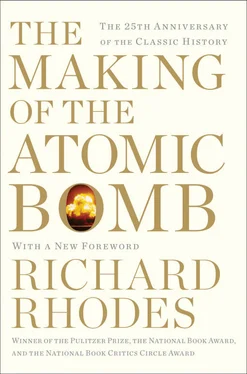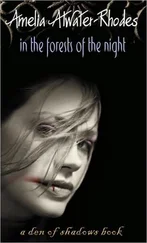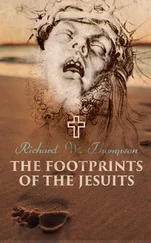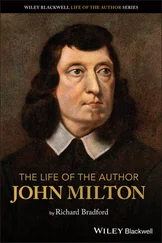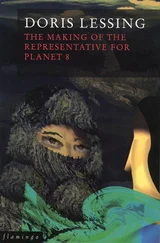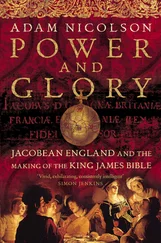The medieval Church, challenged by the spread of learning and the militancy of Islam to shore up its defenses against heresy, exercised its increasing power over the Jews balefully. The Lateran Councils of 1179 and 1215 made the baleful conflict visible by denying Jews authority over Christians, denying them Christian servants, relegating moneylending to Jews by forbidding it to Christians, forbidding Christians lodging in Jewish quarters and thus officially sanctioning the establishment of ghettos and, most onerously, requiring every Jew to wear a distinguishing badge—frequently, on local authority, the yellow Magen David that the Nazis later restored. Every Jew who ventured from the ghetto distinctively marked was a painted bird, exposed to attack.
The fantasy of Jews as a brotherhood of evil swelled in medieval times to a full-blown demonology. The Jewish Messiah became the Antichrist. The Jews became sorcerers of Satan who poisoned wells, tortured the consecrated Host and murdered Christian children to collect their blood for diabolic rites. When the Black Death struck in the fourteenth century, a supposedly demonic people who poisoned wells were obvious suspects: they needed only to have infiltrated some more vicious poison into the water supply. A quarter of Europe died of plague, and in that time of horror tens of thousands of Jews were burned, drowned, hanged or buried alive in retaliation. Massacre became endemic; 350 Jewish communities were decimated in German lands alone.
The English were the first to expel the Jews entirely. The Jews of England belonged to the Crown, which had systematically extracted their wealth through a special Exchequer to the Jews. By 1290 it had bled them dry. Edward I thereupon confiscated what little they had left and threw them out. They crossed to France, but expulsion from that country followed in 1392; from Spain, at the demand of the Inquisition, in 1492; from Portugal in 1497. Since Germany was a region of multiple sovereignties, German Jews could not be generally expelled. They had been fleeing eastward from bitter German persecution in any case since the twelfth century.
The Jews expelled from Western Europe fled to Poland, a large and thinly populated kingdom where elected monarchs welcomed them with generous charters. The medieval German of these emigrant Ashkenazim evolved to Yiddish; they founded villages and towns; they dispersed up and down the long eastern Polish frontier and lived in relative peace for two hundred years.
Twenty-five thousand at the end of the fifteenth century had increased at least tenfold by the middle of the seventeenth. Then, in violent wars with Russia and Sweden, Poland began to break up. Cossacks and their peasant allies murdered great numbers of Jews and sacked hundreds of their communities. The Ukraine was split in two; Poland lost the northern half to Russia. War and disorder continued into the eighteenth century with Prussia, Austria and Turkey variously joining battle. When Russia invaded Poland in 1768, Prussia proposed a three-way partition with Austria to forestall a complete takeover. That led to Poland’s partial dismemberment in 1772. In 1795, after another Russian invasion, the country was completely partitioned and ceased to exist. (Much truncated, it was revived by the Congress of Vienna in 1814 as Congress Poland, joined to Russia by the linkage of Polish kingship for the Czar.) Its Jewish population had increased by then to more than one million souls. Prussia acquired about 150,000 but promptly expelled them eastward. Austria acquired about 250,000. Russia, which soon controlled more than three-fourths of what had been the Polish commonwealth, then also controlled the fates of most of the Eastern Jews. But while Poland had welcomed them, Russia despised them. Its economy was too primitive to need their commercial skills and it abhorred their religion. To Catherine the Great her one million new subjects were first and foremost “the enemies of Christ.” 655
The enemies of Christ became Russia’s “Jewish problem.” In Russia’s benighted intolerance it framed only two solutions: assimilation (by conversion to Christianity) or expulsion. For the interim it practiced quarantine. A decree of 1791 limited Jewish residence to the formerly Polish territories and the unpopulated steppes above the Black Sea, a region that extended north across 286,000 square miles of central Europe to the Baltic: the Pale of Settlement (“pale” in its old sense of “enclosed by a boundary”). The Ashkenazim numbered one-ninth of the Pale’s total population, and might have prospered there, but they were burdened with further restrictions. They were heavily taxed, they could not live in the villages as they had done for generations, they could not keep the village inns or sell liquor to the peasants. Their traditional local governments, the kehillot, were stripped of legal authority but required to collect Jewish taxes. More horribly, under Nicholas I after 1825 the kehillot were charged to conscript twelve-year-old Jewish children for a lifetime of forced service in the Russian Army—six years of brutal “education” followed by twenty-five years in the ranks—a fate that befell between 40,000 and 50,000 Jewish sons before the requirement was relaxed in 1856. The memory of that cruelty would endure: Edward Teller’s grandmother responded to his childhood misbehavior, he reminisced once with a friend, by warning him to be a good boy or the Russians would get him. 656
While Eastern Jews toiled to survive in Mother Russia, emancipation was proceeding in the West. Small Jewish communities had reestablished themselves, made up partly of nominal converts to Christianity who had escaped Spain and Portugal for Holland and England and America, partly of Eastern returnees. The Austrian emperor Joseph II issued an Edict of Tolerance in 1782.
The edicts of emperors were less important to the political future of the Jewish people than the temper of the Enlightenment with its religious skepticism and its faith in the self-evident rights of man. The time had come in the evolution of European forms of government when no single group or class any longer had the power to dominate all others as the nobility had previously done. The nation-state evolved in part to remove this impasse by investing power in the state itself. Such a mechanism made no distinction between Jew and Christian. American Jews thus became American citizens automatically with the Revolution and the Bill of Rights.
The French, remembering ghettos and expulsions, found the emancipation of the Jews of France more difficult. “The Jews should be denied everything as a nation,” the Count of Clermont-Tonnerre argued in the French National Assembly, “but granted everything as individuals…. It is intolerable that [they] should become a separate political formation or class in the country. Every one of them must individually become a citizen.” 657When a Jewish community contracted its loyalty to a monarch in exchange for his protection it only did what other medieval classes and orders had done. But the nation-state was secular and it considered the autonomous Jewish theocracies lodged within its borders in secular terms. In secular terms a separate political body, theocratic or not, to which citizens gave their first loyalty was potentially a rival and inherently subversive. Much monstrosity would devolve from that reification. In the meantime Liberty, Equality and Fraternity prevailed and the Jews of France became citoyens on a September Tuesday in 1791.
Emancipations as they progressed within less revolutionary states included Holland-Belgium, 1795; Sweden, 1848; Denmark and Greece, 1849; England by a gradual unmuddling completely in 1866; Austria, 1867; Spain by the withdrawal of its 1492 order of expulsion in 1868; the new German Empire, 1871. Though they were influential out of all proportion to their numbers, the emancipated Jews of Western Europe, many of whom moved directly to assimilate, were only a minute fraction of the Diaspora. The preponderance of the Jewish people, increased by 1850 to 2.5 million, by 1900 to 5 million, struggled in increasing misery in the Pale.
Читать дальше
